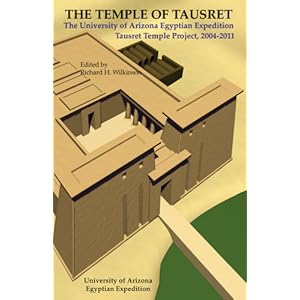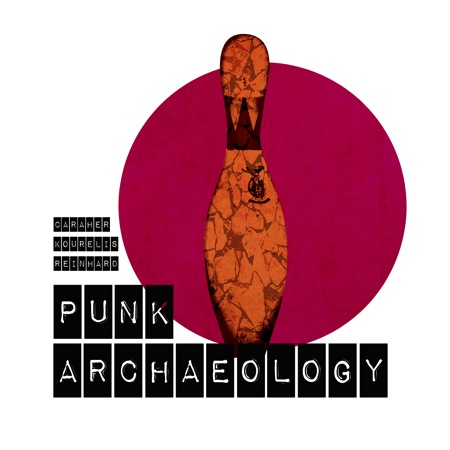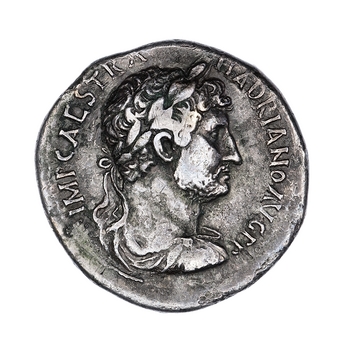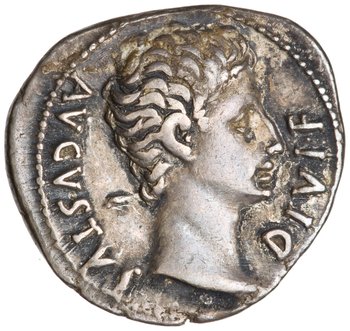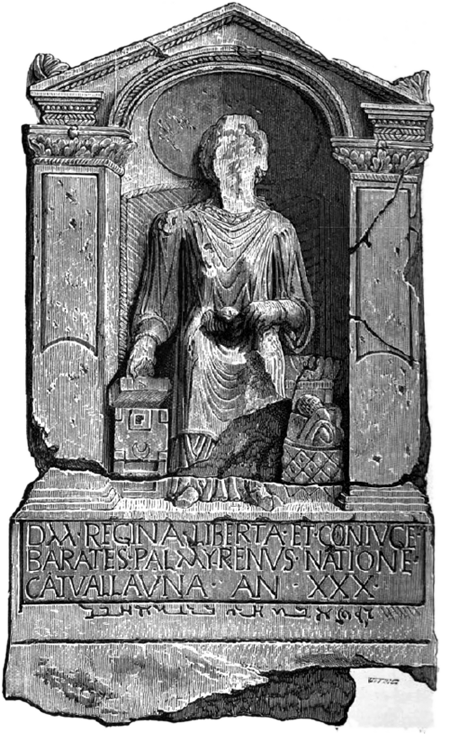September 25, 2014, 10:26 am
You may follow AWOL directly via News Feed (user count not easy to discover), via Feedburner (these are the 7,283 email subscribers), on Facebook (832 likes), or on Twitter (1051 followers). You can also follow AWOL on Google+.
↧
↧
September 25, 2014, 7:00 pm
↧
September 26, 2014, 7:44 am
Bulletin de liaison du groupe international d’étude de la céramique égyptienneISSN: 0255-0903
Bulletin de liaison du groupe international d’étude de la céramique égyptienne 22
IF931_BCE22.pdf (3.68 Mb)Bulletin de liaison du groupe international d’étude de la céramique égyptienne 21
IF848_BCE21.pdf (3.88 Mb)IF791, ISBN 2-7247-0205-0 1997 Collection: BCE 201 vol., 79 p., 20 ۥ Lire en ligne
Bulletin de liaison du groupe international d’étude de la céramique égyptienne 20
IF791_BCE20.pdf (4.6 Mb)IF764, ISBN 2-7247-0166-6 1996 Collection: BCE 191 vol., 63 p., 20 ۥ Lire en ligne
Bulletin de liaison du groupe international d’étude de la céramique égyptienne 19
IF764_BCE19.pdf (4.28 Mb)IF754, ISBN 2-7247-0151-8 1994 Collection: BCE 181 vol., 96 p., 20 ۥ Lire en ligne
Bulletin de liaison du groupe international d’étude de la céramique égyptienne 18
IF754_BCE18.pdf (7.22 Mb)IF743, ISBN 2-7247-0136-4 1993 Collection: BCE 171 vol., 63 p., 20 ۥ Lire en ligne
Bulletin de liaison du groupe international d’étude de la céramique égyptienne 17
IF743_BCE17.pdf (4.22 Mb)Bulletin de liaison du groupe international d’étude de la céramique égyptienne 16
IF731_BCE16.pdf (3.76 Mb)Bulletin de liaison du groupe international d’étude de la céramique égyptienne 15
IF709_BCE15.pdf (4.2 Mb)
Bulletin de liaison du groupe international d’étude de la céramique égyptienne 14
IF694_BCE14.pdf (3.54 Mb)
Bulletin de liaison du groupe international d’étude de la céramique égyptienne 13
IF682_BCE13.pdf (3.82 Mb)Bulletin de liaison du groupe international d’étude de la céramique égyptienne 12
IF671_BCE12.pdf (3.99 Mb)Bulletin de liaison du groupe international d’étude de la céramique égyptienne 11
IF653_BCE11.pdf (4.37 Mb)Bulletin de liaison du groupe international d’étude de la céramique égyptienne 10
IF633_BCE10.pdf (4.9 Mb)Bulletin de liaison du groupe international d’étude de la céramique égyptienne 9
IF621_BCE09.pdf (4.06 Mb)Bulletin de liaison du groupe international d’étude de la céramique égyptienne 8
IF608_BCE08.pdf (3.85 Mb)Bulletin de liaison du groupe international d’étude de la céramique égyptienne 7
IF588_BCE07.pdf (5.15 Mb)Bulletin de liaison du groupe international d’étude de la céramique égyptienne 6
IF571_BCE06.pdf (3.82 Mb)Bulletin de liaison du groupe international d’étude de la céramique égyptienne 5
IF553_BCE05.pdf (2.29 Mb)
Bulletin de liaison du groupe international d’étude de la céramique égyptienne 4
IF541_BCE04.pdf (2.77 Mb)Bulletin de liaison du groupe international d’étude de la céramique égyptienne 3
IF532_BCE03.pdf (2.58 Mb)Bulletin de liaison du groupe international d’étude de la céramique égyptienne 2
IF516_BCE02.pdf (1.6 Mb)Bulletin de liaison du groupe international d’étude de la céramique égyptienne 1
IF486_BCE01.pdf (2.67 Mb)
↧
September 26, 2014, 8:43 am
Vita LatinaISSN: 0042-7306
"Créée en 1957 dans le cadre des expériences de latin vivant, la revue Vita Latina est éditée par l’Association du même nom qui était originellement implantée en Avignon avant d’être hébergée en 1994 par l’université Montpellier III ; elle a pendant longtemps été entièrement rédigée en latin et, outre des articles sur les auteurs classiques, elle contenait des créations littéraires originales (poèmes, courts récits) et des réflexions sur l’actualité. Son orientation éditoriale a évolué et elle s’adresse aujourd’hui à tous ceux qui souhaitent rester informés dans tous les domaines de la recherche en études anciennes (littérature, histoire, philologie, archéologie, philosophie, religion, mythologie, arts, architecture), des origines à l’Antiquité tardive, avec une spécificité pour les auteurs aux programmes des Agrégations de Lettres ou de Philosophie. "
Available periods :
![]() 1989-1999
1989-1999
![]() 2000-2009
2000-2009
![]() 2010-...
2010-...
↧
September 26, 2014, 12:00 pm
Mār Šiprim: Newsletter of the International Association for Assyriology (IAA) ![http://profile.ak.fbcdn.net/hprofile-ak-prn1/c34.34.432.432/s160x160/537222_554627067900372_10795789_n.jpg]()
Welcome to the home of Mār Šiprim, the official Newsletter for the International Association for Assyriology (IAA). Through this Newsletter, the IAA aims to provide an online platform for Assyriologists and Near-Eastern enthusiasts where to interact with each other on both an intellectual and an informal level, thus establishing an international linkage among colleagues.
If you would like to know more about the visions of the IAA or would like to become a member, please visit the IAA website.
↧
↧
September 27, 2014, 12:29 pm
I.Sicily ~ Building a digital corpus of Sicilian inscriptions ![http://isicily.files.wordpress.com/2014/08/cropped-b-base14_sikelia_reduced.jpg]()
I.Sicily is a project to create and make freely available online the complete corpus of inscriptions from ancient Sicily. The project includes texts in all languages (Greek, Latin, Phoenician/Punic, Oscan, Hebrew, and Sikel), from the first inscribed texts of the Archaic period (7th-6th centuries BC) through to those of late Antiquity (5th century AD and later). In the first instance the project is restricted to texts engraved on stone, but it is intended to expand that coverage in the future. The project uses TEI-XML mark-up, according to the EpiDoc schema.
↧
September 29, 2014, 3:50 am
Internet Archaeology is now fully Open Access![http://intarch.ac.uk/logo/ia-logo.gif]()
As of today, Internet Archaeology is an open access journal. We've concluded our hybrid phase and will no longer charge a subscription for access to any of our past and future content.
Several things have spurred this decision. Over the last 4 years, we have made active efforts in this direction, by switching to a default CC-BY license, by opening up our back issues with an annual rolling wall, and by adjusting our subscription charges accordingly. During this time, we have also witnessed a marked increase in quality, funded submissions, including several themed issues. Internet Archaeology has always tried to be more than 'just a journal'. We explore the possibilities of the web and have delved into many different publication formats. This flexibility extends into everything we do. Being a small operation has meant we could be responsive to changes in the wider scholarly landscape, and the journal has simply reached the tipping point.
Funded through JISC's eLib programme, Internet Archaeology was launched in 1995 as a born-digital journal and published its first issue in 1996. It was also open access before the term was really invented. As part of the initial funding agreement, and as the only sustainable option for us at that time, we introduced institutional subscriptions in 2000, followed by subscriptions for individuals in 2001. By 2010, the open access debate had truly sparked into life and it was around that time that we started to publish open access content where funds were available. By the start of 2014 however, over 50% of the articles we had published were open access, so we have decided to make open access the focus of our efforts from now on.
There will always be challenges of course but I'm very excited to be taking the journal into this new phase.
Judith Winters, Editor
29 September 2014
↧
September 29, 2014, 6:20 am
[First posted in AWOL 1 January 2011. Updated 29 September 2014]KentronISSN : 0765-0590
Revue publiée sous la direction de Pierre Sineux. Fondée en 1985 par François Hinard (†), éditée d’abord de manière assez artisanale, Kentron est depuis 2000 publiée par les Presses universitaires de Caen et riche de plus de vingt années d’expérience. Bernard Deforge et Jacquy Chemouni ont dirigé la revue à partir de 1994. En 2008, Pierre Sineux, professeur d’histoire grecque à l’université de Caen Basse-Normandie, a pris le relais, en renouvelant complètement le Conseil scientifique et en dotant la revue d’un Comité de lecture, tout en conservant ce qui faisait, depuis le début, l’originalité de la revue: la volonté de faire dialoguer des disciplines différentes et d’enrichir l’étude de l’Antiquité en croisant les modes d’approche et en multipliant les perspectives. C’est pourquoi aujourd’hui Kentron, revue pluridisciplinaire du monde antique, ouvre ses pages aux littéraires, philosophes, linguistes, historiens et archéologues. Elle accueille des contributions en langue étrangère (anglais, allemand, espagnol, italien). Chaque volume est constitué désormais d’un dossier thématique, de varia et de comptes rendus.
L’archive de la revue Kentron propose, au format Pdf, la totalité des articles publiés dans la revue depuis l’année 1994 (vol. 10, fasc. 1) à l’exception des deux dernières années diffusées exclusivement sous forme de volumes imprimés.
↧
September 29, 2014, 6:44 am
↧
↧
September 29, 2014, 7:25 am
[First posted in AWOL 18 October 2010, updated 29 September 2014] Ancient World Open Bibliographies![http://ancientbiblio.files.wordpress.com/2010/10/cropped-books31.jpg]()
Scholarly Bibliographies Available Online An annotated list, organized by subject.
Zotero Group Library for Ancient World Open Bibliographies
This project is supervised by Phoebe Acheson of the blog (Becoming a) Classics Librarian and Chuck Jones, the Tombros Librarian for Classics and Humanities at Penn State University and the blog AWOL - The Ancient World Online.
There is a companion blog at http://ancientbiblio.wordpress.com/
All materials hosted at this site should be considered covered by a Creative Commons Open license: http://creativecommons.org/publicdomain/zero/1.0/
Controlled Vocabulary and Subject Headings may become useful as the project grows. At the page linked I have begun to collect resources that may be useful in guiding the development of these.
You can support the AWOB Project by:
- Creating content
- Linking to content
- Improving existing content
To Create a New Bibliography Page Hosted at the Wiki
- Create a link to a new page using double square brackets - what's inside the brackets will be the title of the new page:
- Sample New Page To see what that looks like, click on "edit" for this page and look at the wiki markup.
- Go to that new page and start adding content!
Suggestions for New Bibliographies
- Use annotations. They add scholarly value!
- Include links to WorldCat records for books, and include links to reviews, especially open-access ones (BMCR, AJA, etc.).
- Include DOI links for articles, if possible, or other stable urls.
- Arrange the bibliography using sections, for ease of navigation.
Learn How to Edit a Wiki
↧
September 30, 2014, 3:47 am
Wilkinson Egyptology SeriesFounded in 2013, the Wilkinson Egyptology Series is a peer-reviewed imprint of the UAEE. The series is open to proposals from all scholars in the field of Egyptology for publication of monographs, comprehensive site reports, conference proceedings, and other edited works. The goal of the Series is to assist scholars in bringing high-quality work to print quickly, through a review process akin to those of most major journals. After a period of not more than five years, each volume will be made available online, free of charge. The series is named after and designed to reflect Richard H. Wilkinson's prolific academic career: producing only the highest quality work in a timely manner. Contributions to the UAEE in honor of Professor Wilkinson will be marked to support the Series specifically, and can be made here.
Archaeological Research in the Valley of the Kings and Ancient Thebes: Papers Presented in Honor of Richard H. Wilkinson(2013)
Wilkinson Egyptology Series I
In August 2013, the UAEE published Archaeological Research in the Valley of the Kings and Ancient Thebes: Papers Presented in Honor of Richard H. Wilkinson, edited by P.P. Creasman. At nearly 400 pages and including 125+ color illustrations, this work is composed of two dozen chapters by leading scholars from around the world. A great variety of new discoveries and current research are presented, covering topics as diverse as ancient tomb robbery to historic love letters.
To purchase your copy & support the UAEE , click here.
The Temple of Tausret(2011)
The UAEE's current project is the excavation, conservation, and publication of the remains of the memorial temple of Tausert, the 19th Dynasty queen who ruled as a king c. 1190 B.C.E.
You can read all about the work in The Temple of Tausret(2011, UAEE), ed. R.H. Wilkinson. All proceeds from this volume's sale go to the UAEE!
To purchase your copy & support the UAEE , click here.
Also, you can learn virtually all there is to know about the Pharaoh-Queen Tausret in Tausret: Forgotten Queen and Pharaoh of Egypt(2012, Oxford), ed. R.H. Wilkinson, which can also be purchased from Amazon, here: http://tinyurl.com/7d5h8ww or, get it as a Kindle eBook: http://tinyurl.com/72ya7xn
Valley of the Sun Kings: New Explorations in the Tombs of the Pharaohs (1995)
The papers from the International Conference on the Valley of the Kings conducted by the Egyptian Expedition were published as Valley of the Sun Kings: New Explorations in the Tombs of the Pharaohs (Tucson, 1995).
The volume is printed as a library quality laminated paperback (ISBN 0-9649958), 165 pp. with over 90 photographs, figures, maps and charts.
A limited number of copies of this volume are available for purchase from the UAEE.
↧
September 30, 2014, 7:05 am
Punk Archaeology: The BookISBN-13: 978-0692281024 (The Digital Press at The University of North Dakota)
ISBN-10: 0692281029
Edited By
William Caraher
Kostis Kourelis
Andrew Reinhard
![http://mediterraneanworld.files.wordpress.com/2014/09/punka_cover_1.jpg?w=900&h=900]()
Download it here or here.
Description:
Punk Archaeology is a irreverent and relevant movement in archaeology, and these papers provide a comprehensive anti-manifesto.
Acknowledgements:
This volume was made possible by a whole community of folks ranging from the relentless Andrew Reinhard who proofed this over and over and over again to Aaron Barth who put together the conference which produced these papers. The authors were great to work with except Richard Rothaus who insisted that we include his handwritten paper. (I kid, I kid). Support for the whole deal came from the Cyprus Research Fund, the Center for Heritage Renewal at North Dakota State University, and the North Dakota Humanities Council. Administrators at the University of North Dakota are to be commended for raising their eyebrows politely and ignoring what I was doing
↧
September 30, 2014, 7:40 am
ASOR Annual Meeting Academic and Business Meetings ScheduleAnnual Meeting Academic and Business Meetings Schedules
2013: Baltimore, MD
- 2013 Academic Program Schedule in PDF.
- 2013 Business Meetings Schedule in HTML and PDF.
- 2013 Schedule At-A-Glance in HTML and PDF.
2012: Chicago, IL
- 2012 Academic Program Schedule in PDF.
- 2012 Business Meetings Schedule in PDF.
2011: San Francisco, CA
- 2011 Academic Program Schedule in PDF.
- 2011 Business Meetings Schedule in PDF.
2010: Atlanta, GA
- 2010 Academic Program Schedule in PDF.
- 2010 Business Meetings Schedule in PDF.
2009: New Orleans, LA
2008: Boston, MA
2007: San Diego, CA
2006: Washington, DC
2005: Philadelphia, PA
2004: San Antonio, TX
2003: Atlanta, GA
2002: Toronto, ON
2001: Boulder, CO
2000: Washington, DC (centennial celebration)
2000: Nashville, TN
1999: Cambridge, MA
1998: Orlando, FL
1997: Napa, CA
↧
↧
September 30, 2014, 8:51 am
[First posted in AWOL 19 December 2013, updated 30 September 2014]Egyptology Books and Articles in PDF OnlineThe world-wide-web is replete with links to Egyptological resources, and there are many pages of bibliography out there, of which the prime example is the Online Egyptological Bibliography. But as yet, none of the more systematic bibliographies are publishing links to the actual PDF files of books and articles which may be freely acquired online, although they may be collecting the URL references. This project attempts to go some way toward filling that gap.
Click here for the full list.
Notice: Bookmark this page, not the full list, as the file name may change.
The list uses standard Egyptological abbreviations for books and journals.
This project is a "work in progress", and is bound to contain errors and omissions. The document takes the form of one large HTML file with the data arranged by author; links to both the web page from which the file can be accessed and the PDF file for the document itself are given. Searching must be done using the Find function of your web browser. It may be possible to enhance this capability in the future, but much will depend on the reactions of internet users to this work.
The data has been collected and arranged by Andrea Middleton, Brooke Garcia, and Robyn Price, Graduate Assistants in the Institute of Egyptian Art and Archaeology, a unit of the Department of Art in the University of Memphis (Tennessee, USA). We have tried to seek out as many books and articles as possible on Egyptological subjects which are freely accessible to anyone without the need for privileged access. Thus we have searched sites such as the Internet Archive, the University of Heidelberg Library, the Oriental Institute, the Metropolitan Museum, the Giza Library, Ancient World Online (AWOL), and many more, as well as attempting to collect links noted in the pages of EEF (Egyptologists' Electronic Forum) News.
Sites which require institutional access or a password are not included—thus journals on JSTOR have not been indexed. Nor have papers available on www.academia.edu or http://www.ifao.egnet.net/bifao/ (BIFAO) been included here. It is likely that some articles on JSTOR are duplicated elsewhere, and it is equally possible that some articles and books are available at more than one location. In the latter case, we have tried to give all the options.
Please report comments, errors, omissions, etc. to nigel.strudwick @ memphis.edu. We hope this work is useful.
Nigel Strudwick
September 2014
↧
September 30, 2014, 11:45 am
↧
September 30, 2014, 11:51 am
Identify Imperial PortraitsSebastian Heath, NYU/ISAW
Introduction
Put simply, this page collects 3D models of Roman imperial figures so that students can gain skills in identifying them. It is part of a sequence and readers are encouraged to begin on the coin identification page.
The portraits shown below come from the following institutions or collections: Capitoline Museum, Corinth Museum, Getty Villa, Metropolitan Museum of Art, an Art Institute of Chicago via Anonymous Loan from Private Collector, North Carolina Museum of Art, Vatican Museums, and Yale University Art Gallery. The 3D models are generated from personal photographs and images from wikipedia/flickr or were dowloaded from public internet sources.
![http://numismatics.org/collectionimages/19001949/1948/1948.19.1032.obv.width350.jpg]()
The above [click through] model of a portrait now on display in the Getty Villa, and images of a coin, now in the collection of the American Numismatic Society, both show an image of Augustus, the first Roman Emperor. Click on the model and rotate it to view Augustus in profile. That emphasizes the similarity of the small numismatic portrait and the larger sculptural representation. Also note that the coin identifies its subject. Specialists use such "self-identifying" Roman coins to identify portraits. Follow this same procedure for the unidentified portraits below.
One hint before you start, none of the portraits shown below are also of Augustus. That would be too easy.
↧
Via e-mail
The Friedberg Genizah Project (FGP) is pleased to announce that, following an Agreement with the Oxford Bodleian Libraries, high-quality digital images produced by the Oxford digitization services for all Genizah manuscripts and fragments in these Libraries (about 25,000 images) will be displayed in the Friedberg Genizah website.
FGP would like to thank the Bodleian Libraries and their Officers for their goodwill and their genuine spirit of cooperation in this endeavor.
↧
↧
Roman Inscriptions of Britain![http://romaninscriptionsofbritain.org/images/RIB001065LS-home.png]()
Welcome to the home of RIB online
This website hosts Volume One of The Roman Inscriptions of Britain, R.G. Collingwood's and R.P. Wright's magisterial edition of 2,401 monumental inscriptions from Britain found prior to 1955. It also incorporates all Addenda and Corrigenda published in the 1995 reprint of RIB (edited by R.S.O. Tomlin) and the annual survey of inscriptions published in Britannia since.
Preface (2014)
Editorial Policy
This online edition of RIB aims to faithfully reproduce the printed edition and the relevant addenda and corrigenda published in Journal of Roman Studies and Britannia. We have endeavoured to make as few editorial interventions as possible, apart from the correction of typographical errors and the modifications necessary to incorporate the addenda and corrigenda. In particular:
- Addenda have been interleaved or appended, as appropriate (e.g., 1045, 1051). Addenda from the 1995 reprint are indicated by the notation ‘[RIB + add.]’. Addenda from Britannia since 1995 are similarly notated with their respective volume numbers and page references.
- Corrigenda have been silently applied.
- Last known locations of inscriptions have been updated where more recent information has been obtained.
- Measurements have been converted from English imperial to metric, except where quoted. However, conversion of Roman measures to English feet (e.g., from passus or pedes) are unchanged.
- Certain personal names have been regularized: Lywhd, Lluyd (sp?).
- Instances of consonantal u have been changed to v.
- Instances of ‘(centuria/o)’ and ‘(milliaria)’ have been converted to respective symbols (𐆛 and ↀ) (e.g., 143, 977).
- Newer readings characterized as ‘read’ or ‘better’ in the Addenda published with the 1995 reprint of RIB have been incorporated into transcripts.
- References to "Mr. (now Professor) …" changed to "Professor …" (etc.)
- Per Addendum (see note to RIB 152), all translations of numen as ‘deity’ have been changed to ‘divinity’, e.g., instances of ‘deities of the emperor’ are now ‘divinities of the emperor’.
- Certain museum or other holding institution names have been updated (e.g., Carlisle Museum is now Tullie House Museum).
- There have been numerous reorganizations of modern political boundaries in Britain in the nearly fifty years since RIB was first published. Accordingly, all geographical references have been updated to reflect these changes. E.g., the former county of Westmorland has been subsumed into Cumbria (formerly Cumberland), the Ridings of Yorkshire have been re-organized into their respective modern counties, Jarrow has been moved from County Durham to Tyne & Wear, etc.
- Other geographical changes are as follows:
- Wales now has its own section.
- The Hadrian's Wall sector from Great Chesters to Birdoswald, which spans the counties of Cumbria and Northumberland has been partitioned to facilitate the grouping of inscriptions by county.
- Chesterholm has been re-named as Vindolanda.
- Sites along the Antonine Wall have been re-organized and new sites (viz., Castlehill, Hutcheson Hill, Kirkintilloch, and Old Kilpatrick) have been created. RIB 2186 has been moved to Cadder.
- Carlisle, Corbridge, Vindolanda, and South Shields are now grouped under Hadrians Wall, consistent with the scheme adopted by RIB III.
- RIB 359, 363, 371-375, and 377 have been moved from Caerleon to the new site of Great Bulmore.
- The site of Dolaucothi has been re-named to Pumsaint (as in RIB iii).
↧
[First posted in AWOL 5 June 2013, updated (changed URLs 1 October 2014] The Mamasani Archaeological Project: Stage 1 The response from colleagues to the appearance of the first edition of The Mamasani Archaeological Project: Stage One was tremendous but, for various reasons, it proved difficult to distribute the book from Tehran where it was published. Although co-publication with a publisher in Britain, Australia or Europe was investigated five years ago, nothing came of these original enquiries. Earlier this year, we raised the issue of distribution and, with the assistance of Dr Abbas Moghaddam, we put a proposal to Dr Mohammad Mortezaie, Director of the Iranian Center for Archaeological Research (ICAR), suggesting the publication of a revised, second edition, as well as a downloadable PDF version, outside of Iran so that students and scholars with an interest in Iranian archaeology could easily access the book. To our great delight this proposal was approved and the result is before you.
D.T. Potts, University of Sydney.
Purchase
The second edition of The Mamasani archaeological project stage one: A report on the first two seasons of the ICAR–University of Sydney expedition to the Mamasani District, Fars Province, Iran is published by Archaeopress as BAR S2044 and may be ordered directly from them, Amazon.co.uk, or the David Brown Book Co.
Downloads
Complete edition
Individual chapters
High-resolution downloads
Note that these files are extremely large and you will almost certainly be satisfied with the above versions instead.
Complete edition: High-resolution
Individual chapters: High-resolution
↧
[First posted in AWOL 28 December 2010. Updated 1 October 2014]Chicago House BulletinThe Epigraphic Survey based at Chicago House in Luxor, Egypt, is directed by W. Raymond Johnson, PhD, Research Associate (Associate Professor) NELC and Oriental Institute.
![]()
![]() The mission of the Survey since its founding in 1924 has been to produce photographs and precise line drawings of the inscriptions and relief scenes on major temples and tombs at Luxor for publication. More recently the Survey has expanded its program to include conservation, restoration, and site management. In addition to the field director, the professional staff of the Survey normally includes three to four epigraphers, four to five artists, two photographers, an architect, a librarian, several conservators, stonemasons, and IT consultants. The epigraphers and artists include both graduate students and post-doctoral scholars who have received training in all aspects of Egyptology. The Epigraphic Survey is currently conducting its 90th archaeological field season.
The mission of the Survey since its founding in 1924 has been to produce photographs and precise line drawings of the inscriptions and relief scenes on major temples and tombs at Luxor for publication. More recently the Survey has expanded its program to include conservation, restoration, and site management. In addition to the field director, the professional staff of the Survey normally includes three to four epigraphers, four to five artists, two photographers, an architect, a librarian, several conservators, stonemasons, and IT consultants. The epigraphers and artists include both graduate students and post-doctoral scholars who have received training in all aspects of Egyptology. The Epigraphic Survey is currently conducting its 90th archaeological field season.
- Chicago House Bulletin XXV - July 2014
- Chicago House Bulletin XXIV - July 2013
- Chicago House Bulletin XXIII - July 2012
- Chicago House Bulletin XXII - October 2011
- Chicago House Bulletin XXI - September 2010
- Chicago House Bulletin XX - November 2009
- Chicago House Bulletin XIX - February 2009
- Chicago House Bulletin XIX Prequel- Winter 2009
- Chicago House Bulletin XVIII - November 2, 2007
- Chicago House Bulletin XVII - October 2, 2006
- Chicago House Bulletin XVI - September 15, 2005
- Chicago House Bulletin XV - September 15, 2004
- Chicago House Bulletin XIV, No.1 - September 1, 2003
- Chicago House Bulletin XIII, No.1 - September 1, 2002
- Chicago House Bulletin XII, No.1 - September 1, 2001
- Chicago House Bulletin XI, No.1 - September 11, 2000
- Chicago House Bulletin X, No.1 - September 15, 1999
- Chicago House Bulletin IX, No.1 - November 9, 1998
- Chicago House Bulletin VIII, No.2/3 - August 15, 1997
- Chicago House Bulletin VIII, No.1 - December 15, 1996
- Chicago House Bulletin VII, No.3 - August 15, 1996
- Chicago House Bulletin VII, No.2 - April 15, 1996
- Chicago House Bulletin VII, No.1 - December 15, 1995
- Chicago House Bulletin VI, No.3 - August 15, 1995
- Chicago House Bulletin VI, No.2 - April 15, 1995
- Chicago House Bulletin VI, No.1 - December 15, 1994
- Chicago House Bulletin V, No.3 - August 15, 1994
- Chicago House Bulletin V, No.2 - April 15, 1994
- Chicago House Bulletin V, No.1 - January 15, 1994
- Chicago House Bulletin IV, No.3 - August 15, 1993
- Chicago House Bulletin IV, No.2 - April 30, 1993
- Chicago House Bulletin IV, No.1 - December 30, 1992
- Chicago House Bulletin III, No.3 - August 15, 1992
- Chicago House Bulletin III, No.2 - May 1, 1992
- Chicago House Bulletin III, No.1 - December 15, 1991
- Chicago House Bulletin II, No.3 - August 15, 1991
- Chicago House Bulletin II, No.2 - April 15, 1991
- Chicago House Bulletin II, No.1 - December 15, 1990
- Chicago House Bulletin I, No.3 - August 15, 1990
- Chicago House Bulletin I, No.2 - April 15, 1990
- Chicago House Bulletin I, No.1 - December 10, 1989
Some issues of the Chicago House Bulletin originally appeared as a part of the
Oriental Institute News & Notes:
For a listing of all Oriental Institute publications available online see:
↧




























